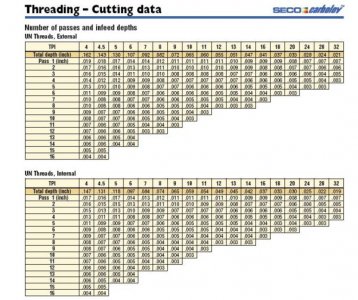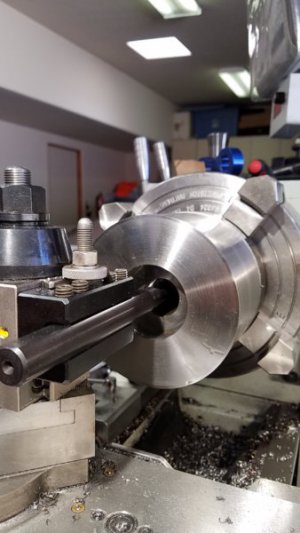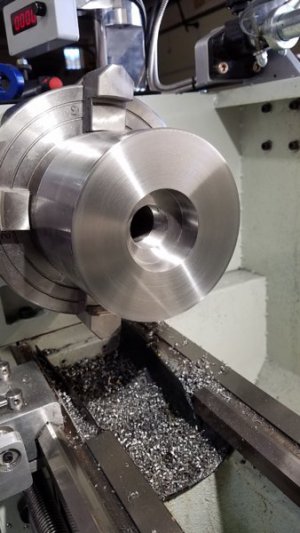All good points, in particular on the HSS cutter sharpening/profile. I agree with the depth of cut probably being too much, and the tables you mentioned are often based on larger cutters in more rigid lathes. I would think that HSS cutter would do well/better in this application, I use carbide thread cutting inserts because they work decently in most of my applications and if they break (which happened when cutting the M50 1.5 thread), I pop a new one in and maintain the same cutter position. They also make HSS inserts, that I may try but they are more expensive then carbide ones. There are also issues of rigidity/deflection with smaller stock and sometimes the stock may twist slightly if the cutter gets caught or chatters. I would think this would not be a issue with the larger stock/thread you are cutting, just need more smaller passes.
The lathe stop system uses electronic braking, with 1 second stopping time. In reality it stops the cutter at the same exact position on every pass, the proximity sensor is triggered by the carriage position, with the P sensor attached to the micrometer stop. So one can adjust it with a high degree of resolution. No worries. There are some variations as to threading with the cross slide vs. threading with the compound slide (there have been some recent posting on this). Internal/blind threads I only use the cross slide to maintain the same ending cutter position, I do not cut a relief, just a end grove with the my threading insert. The cutter will always finish in the grove. External threads, it varies. Usually just the cross slide, but there are some cases where using the compound slide produces better chip formation and finish. Since the P sensor is triggered by the carriage, changing the compound changes the cutter finish position and requires a wider landing relief. When threading with the cross slide, I just cut a relief groove and can thread to the shoulder (usually within 0.001"). The other significant advantage with this system is that the half-nut stays engaged through the whole process. Nice because my reflexes and eyesight suck as I get (am) older. I have also seen mechanical stop systems that disengage the half-nut, but this wouldn't help me when I do metric threads.
Cutting internal blind thread and finished thread (sorry did not clean the chips out)
View attachment 243581View attachment 243582
Threading with a proximity stop and electronic braking.





